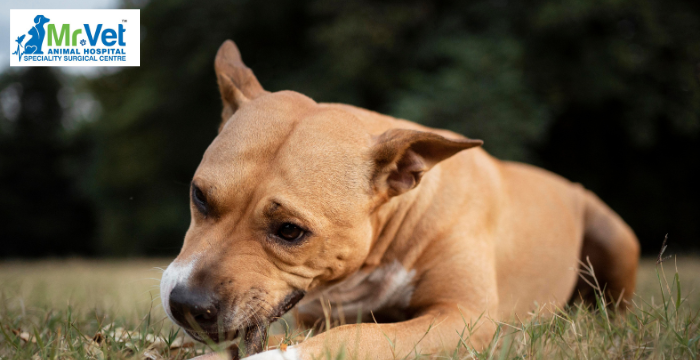
Just like humans, dogs can suffer from various allergies that cause discomfort and affect their overall well-being. Identifying common dog allergies, recognizing symptoms, and providing the right treatment and prevention can help your furry friend live a healthier, happier life. In this guide, we’ll explore everything you need to know about dog allergies, including common triggers, how to manage them, and steps you can take to prevent allergic reactions in your pet.
What Are Dog Allergies?
Allergies in dogs occur when their immune system reacts to certain substances (called allergens) that are usually harmless. These allergens can be found in their environment, food, or even the products they use. When exposed to these triggers, your dog’s immune system overreacts, resulting in a range of uncomfortable symptoms.
Common Types of Dog Allergies
There are several types of allergies in dogs, and understanding the different triggers can help you pinpoint the issue.
- Environmental Allergies (Atopy) These allergies are caused by substances found in the environment, such as:
- Pollen
- Dust mites
- Mold spores
- Grass Dogs with environmental allergies may experience symptoms year-round or seasonally, depending on the allergen.
- Food Allergies Food allergies occur when your dog’s immune system reacts to a particular ingredient in their diet. Common food allergens for dogs include:
- Beef
- Chicken
- Dairy
- Wheat
- Soy Food allergies can lead to gastrointestinal issues or skin irritations.
- Flea Allergy Dermatitis Flea bites can trigger an allergic reaction in dogs, particularly due to flea saliva. Even one bite can cause severe itching and discomfort, leading to scratching, hair loss, and skin infections.
- Contact Allergies This type of allergy occurs when your dog’s skin comes into direct contact with an irritant. Common causes include:
- Shampoos or cleaning products
- Certain types of fabrics
- Grass or plants Contact allergies typically affect areas with little to no fur, such as the belly and paws.
Symptoms of Dog Allergies
Recognizing the symptoms of allergies in your dog can help you seek timely treatment. Common signs include:
- Itching and Scratching: Constant itching, particularly in areas like the paws, ears, or belly.
- Red or Inflamed Skin: Skin irritation, redness, and swelling.
- Ear Infections: Recurrent ear infections, accompanied by discharge or odor.
- Hair Loss: Bald patches due to excessive scratching or licking.
- Gastrointestinal Issues: Vomiting, diarrhea, or excessive gas, especially in cases of food allergies.
- Sneezing or Coughing: Respiratory symptoms are often linked to environmental allergies.
Treatment Options for Dog Allergies
Treatment depends on the type and severity of the allergy. Here are some common approaches:
- Medication
- Antihistamines: These can help control mild allergic reactions.
- Steroids: For severe itching and inflammation, corticosteroids may be prescribed.
- Immunotherapy: For chronic allergies, allergy shots or drops can be administered to gradually desensitize your dog to the allergen.
- Topical Treatments
- Medicated shampoos and ointments can soothe irritated skin and reduce itching.
- Dietary Changes
- For food allergies, an elimination diet may be recommended to identify the allergen. Switching to hypoallergenic or novel protein diets can prevent allergic reactions.
- Flea Prevention
- Regular use of flea control products, such as flea collars or spot-on treatments, can prevent flea allergy dermatitis.
- Environmental Management
- Reducing exposure to environmental allergens may involve using air purifiers, cleaning your dog’s bedding regularly, and wiping their paws after outdoor walks.
Prevention of Dog Allergies
While some allergies cannot be completely prevented, there are steps you can take to minimize your dog’s risk of allergic reactions.
- Keep Your Dog Clean
Regular bathing and grooming help remove allergens like pollen, dust, and fleas from your dog’s skin and coat. - Maintain a Healthy Diet
Feed your dog a balanced diet that avoids common allergens. If your dog has known food sensitivities, ensure their diet is free of those triggers. - Use Flea Prevention Year-Round
Consistent use of flea prevention treatments can stop flea allergy dermatitis before it starts. - Create an Allergen-Free Environment
Keep your home clean by vacuuming regularly, using hypoallergenic products, and controlling dust mites with air filters or dehumidifiers.
When to See a Veterinarian
If you notice persistent symptoms of allergies in your dog, it’s important to consult a veterinarian. A vet can perform tests such as skin tests, blood tests, or food trials to diagnose the allergy and recommend the best treatment plan.
Conclusion
Dog allergies are a common issue, but with the right treatment and prevention measures, your pet can live comfortably and without constant discomfort. By recognizing the symptoms and working with a veterinarian to address the problem, you can ensure your dog enjoys a happy, healthy life free from allergic reactions.If you think your dog may be suffering from allergies, don’t hesitate to visit MrVet Hospitals for expert care and advice. Our veterinary team is equipped to diagnose and treat a wide range of allergies, ensuring your pet gets the relief they need.
